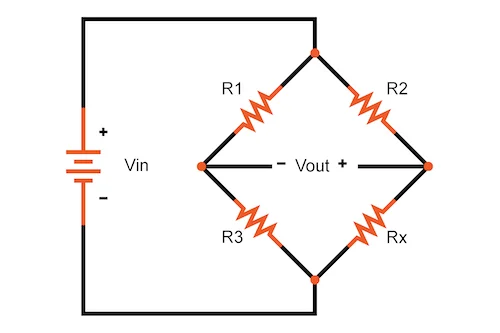This page is best viewed on a monitor.

A Wheatstone Bridge is essentially two voltage dividers connected in parallel, with their outputs compared to determine a difference. This configuration is commonly used for precise measurement of resistances and sensing applications, such as temperature or strain measurement.
The operation is based on the following principles:
- The static divider is formed by resistors R1 (top-left) and R3 (bottom-left).
- The variable divider is formed by resistors R2 (top-right) and R4 (bottom-right), where R2 or R4 may represent a sensor with variable resistance.
- The static voltage is measured at the junction of R1 and R3, and the variable voltage is measured at the junction of R2 and R4.
- The differential voltage is the difference between the variable voltage and static voltage:
Vout = Vvariable - Vstatic.
Note: Either R2 or R4 can have a range, but not both. The other must be a single value.
| Resistance (Ohms) | Vout (Differential Voltage) |
|---|
